► Porsche reveals its new Le Mans challenger
► New 963 racing car will race from 2023
► Will compete in LMDh class against all-comers
Porsche is returning to Le Mans with its new 963 LMDh, but it’ll be doing so with not one – but four cars. Three of them will be works cars – probably decked out in Stuttgart’s usual black, white and red livery – but one will be the stunning privateer entry you see above and below.
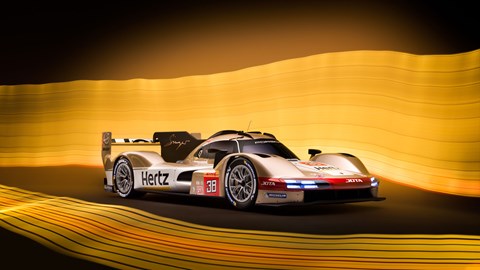
The Hertz Jota car has support from Hertz and the Singer brand and also features official apparel from Brady; the clothing brand created by the greatest quarterback of all time, Tom Brady.
‘I have been a big fan of motor racing for a long time, and for Brady to now be a part of Hertz Team Jota as the future of motorsport apparel and design is an incredibly exciting opportunity,’ he said. ‘Brady and Hertz are great brands that pride themselves on teamwork, determination and providing a seamless experience, making this the perfect partnership. We’re all looking forward to competing at the iconic Le Mans 24 Hours later this year.’
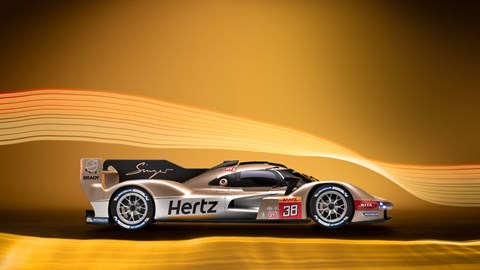
Porsche 963: what you need to know
Porsche’s new Le Mans car is called the 963.
It’s a name that sounds fast. The Porsche 962 won Le Mans multiple times in the ’80s and again in the ’90s, so if the new car can go one better on the track as well as by name, it’ll be a force to be reckoned with.
The 963 has been revealed at the Goodwood Festival of Speed, in a white, red and black livery. It’ll slot into the endurance racing’s new LMDh rules – a class which will have comparable performance to the new Hypercar category, and one in which the 963 could battle for overall spoils at Le Mans and in the wider World Endurance Championship (WEC) as well as IMSA racing in America.
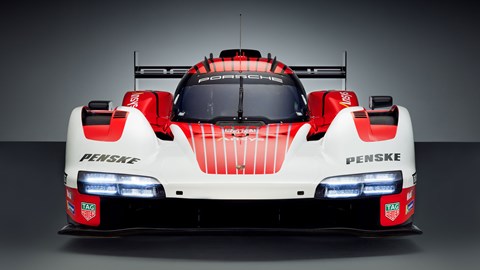
The 963 will be operated by the Penske racing team (an outfit with no little history itself) but backed by the Porsche factory.
What powers the 963?
A 4.6-litre twin-turbo V8, based on that of the 918 Spyder (and RS Spyder racing car, ran by Team Penske, in a neat bit of symmetry). In accordance with LMDh rules, it’s a hybrid, using components supplied by Bosch, Williams Advanced Engineering and Xtrac.
In total there’s 671bhp (the same figure as a McLaren Artura – but the 963 packs an awful lot more downforce from its aerodynamic bodywork).
In accordance with LMDh rules, it uses a third-party chassis (an LMP2-spec monocoque supplied by Multimatic) but has Porsche-designed bodywork.
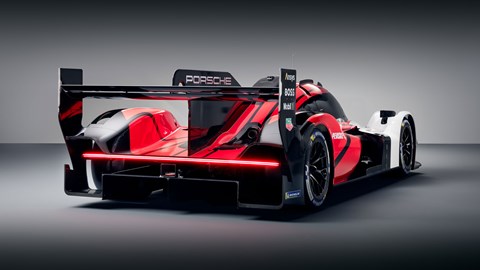
The horizontal rear light bar takes its cues from modern Porsche road cars, such as the Taycan and the current Porsche 911.
Who’s driving it?
Established Porsche endurance drivers including Kevin Estre, Michael Christensen, Andre Lotterer, Laurens Vanthoor and Matt Campbell. Ex-F1 driver Felipe Nasr will join the ranks too, alongside other drivers.
Who will Porsche be racing against?
In the Hypercar class, Toyota fields its GR Super Sport and Glickenhaus its 007 model, and Peugeot joins the class at the Monza WEC round with its 9X8 Hypercar.
Le Mans celebrates its centenary in 2023, and it’s a race everyone wants to win. As well as Porsche, Audi, Glickenhaus, Peugeot and Toyota, Ferrari will return to Le Mans as a full factory effort for the first time since the ’70s.
BMW joins the LMDh class in 2024 (25 years after it won Le Mans), Lamborghini has announced intentions to build a Hypercar for 2024 and Cadillac is in the frame too for 2023, as is Acura (albeit only in the USA-based IMSA championship).
Former Le Mans giant Audi has also announced plans to compete in LMDh although its programme may be postponed to beyond 2023. Porsche and Audi (both part of the VW Group empire) last squared up against each other at Le Mans in 2016.
While it hasn’t raced in the headline class at Le Mans since withdrawing from LMP1, Porsche has maintained a works presence in the closely fought GTE category with its 911 RSR.
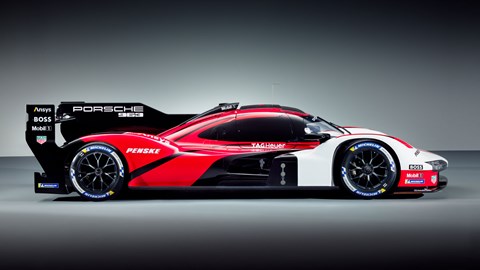
Teaming up with Penske
Porsche’s Le Mans programme will be a joint project with the Team Penske racing outfit, under an agreement that will see the Porsche hybrid race in both the IMSA and WEC classes, and is expected to run for several years.
Penske Porsche will prepare four factory LMDh but will supplement them with customer cars for third-party teams too, from as early as the 2023 season.
It’s not the first time the two have worked together; Penske and Porsche teamed up from 2006 to 2008 in the ALMS series, and in the ’70s with the Porsche 917 in the Can-Am series.
There will be two preparation centres for the 963: cars racing in the WEC will be prepped in Germany, and cars racing in IMSA from a separate base in North Carolina.
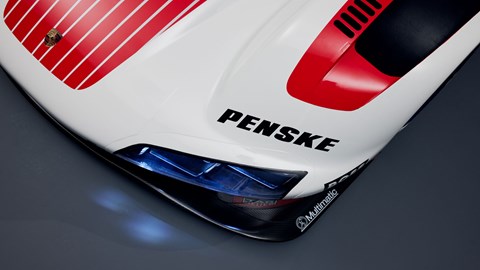
What is the LMDh class?
It had been rumoured that Porsche would enter the hotly anticipated Hypercar class, but it will in fact compete in the new LMDh (Le Mans Daytona hybrid) class, which is being introduced in both the FIA World Endurance Championship (WEC) and IMSA series in North America.
That’s a class for prototype race cars with hybrid powertrains. The cars will weigh around 1000kg and turn out around 670bhp. Balance of Performance regulations will ensure they can fight for overall victory alongside the Hypercars. Both new classes come into effect next year.
The LMDh class has been created in collaboration between the WEC and IMSA to allow the same types of car to race for victory in major endurance race classics all over the world – handy for marketing the Porsche brand globally.
The sheer costs involved drove Porsche out of the LMP1 class last time, but it’s confident the new LMDh formula is more sustainable.
Why did Porsche choose LMDh instead of Hypercar?
It’s more cost-efficient than Hypercar, and enables the same car to be raced both in the popular IMSA series in America as well as the WEC and Le Mans. Balance of Performance regulations ensure parity with the Hypercar class, and both categories should be able to compete for overall wins.
Porsche’s CEO Oliver Blume has previously said: ‘The new LMDh category allows us to fight for overall victories with a hybrid system at the Le Mans, Daytona and Sebring classics – without breaking the bank. The project is extremely attractive for Porsche.’
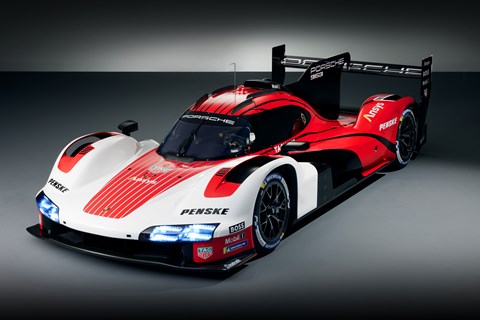
Why is LMDh cheaper to race in than LMP1?
Partly because it uses some ‘spec’ components, notably the control electronics for the hybrid powertrain. The chassis, too, isn’t made by Porsche: a choice of four racing car specialist manufacturers supply chassis (based on upgraded LMP2 designs) to companies entering the LMDh class. Multimatic supplies the 963’s.
Porsche supplies its own combustion engine and bodywork but regulations tightly control the amount of engineering freedom they’ll have.
These cost-cutting regs, as well as the magic centenary year, have ushered in potentially huge grids of Hypercar and LMDh cars fielded by factory and private teams alike, all with a shot at victory. Next year could be a golden year for endurance racing.